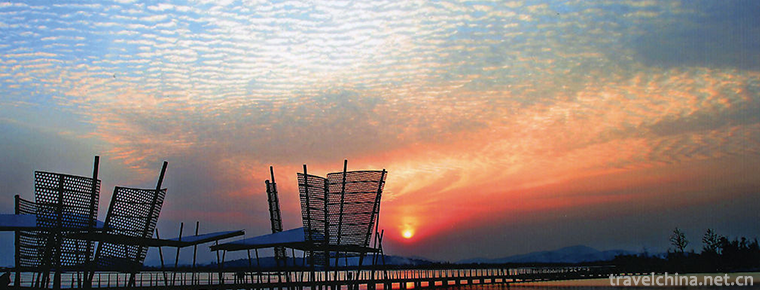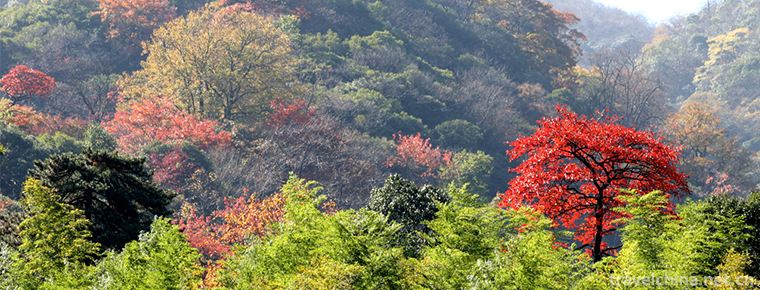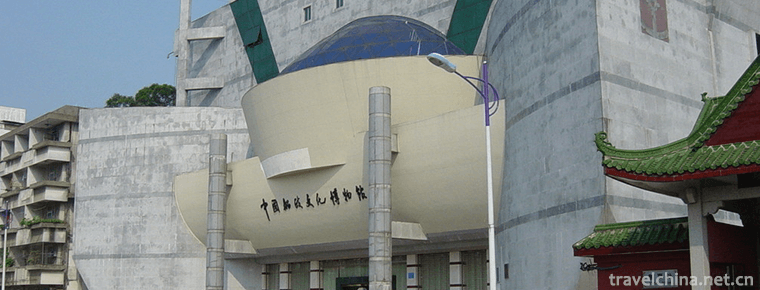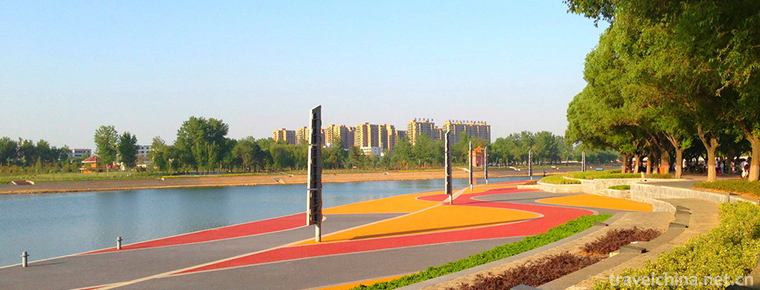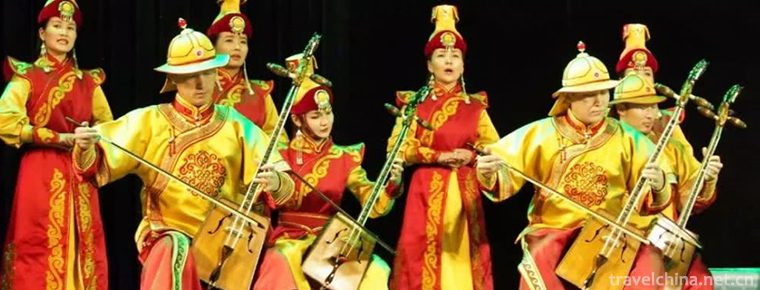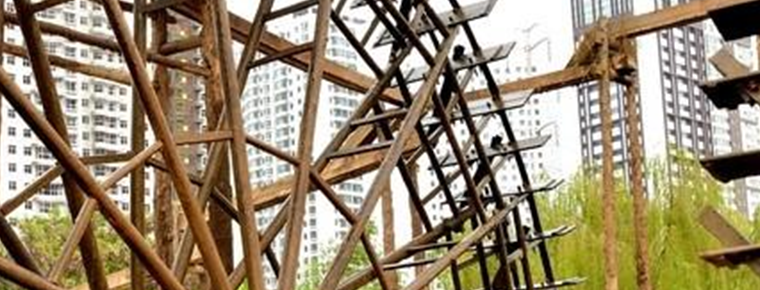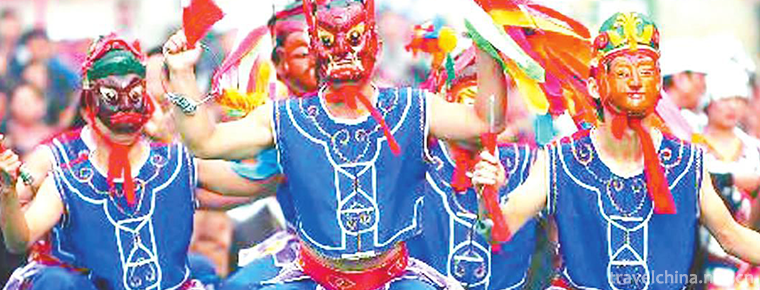Legend of Li Shizhen
Legend of Li Shizhen
Li Shizhen is a great medical scientist in Ming Dynasty in China. His footsteps have traveled all over Jiangxi, Jiangsu, Anhui, Hunan and Guangdong. The legends about him and Compendium of Materia Medica are not only influential in Qichun, Huanggang and Hubei, but also well-known throughout the country and the world. His Compendium of Materia Medica is still widely used in the medical field. Li Shizhen's legend, as a folk literature,
On May 23, 2011, Li Shizhen legend was approved by the State Council to be included in the third batch of national intangible cultural heritage protection list.
Source of legend
The legend of Li Shizhen is very popular among the people. Almost all the old Chinese medicine practitioners and herb Diggers in Qichun and southeastern Hubei can tell several legends of Li Shizhen. Many of the folk slang spoken by people in Qizhou are from the legend of Li Shizhen. For example, the slang for skilled doctors is "turning over dead people, falling down alive". The slang for poor people is "Pueraria lobata tied waist, half bowl to eat" and so on. Even many folk customs and medical customs in southeastern Hubei originate from Li Shizhen's legends. For example, why does the residue of decocted Chinese herbs fall on the road? Why do you use three fingers to grasp traditional Chinese medicine? All these show that Li Shizhen's legend has penetrated into people's production and life.
After the founding of New China, Zhang Huijian, a well-known journalist who returned from Premier Zhou's visit to the Soviet Union, visited Qizhou to create the film script Li Shizhen. In addition to consulting local historical materials and understanding a large number of epitaphs and inscriptions, he collected many folk stories about Li Shizhen. After returning to Shanghai, he created the film script Li Shizhen and published biographical literature books of the same name. Later, many writers and literary and artistic workers came to Qichun to go deep into life. According to Li Shizhen's life trajectory, they took the official history as the skeleton, used the wild history as the flesh and blood, interwoven with the false and the real, mixed with the true and the imaginary. They combined the anecdotes and interesting stories of Li Shizhen collected by them, and drew a picture of a medical sage and medicinal fairy who tasted hundred herbs, cured the people's illness, dared to be angry and upright.
In order to make the legend of Li Shizhen circulate permanently, Qichun set up a group to declare the protection list of intangible cultural heritage by the legend of Li Shizhen. Through the efforts of various departments at all levels and on the basis of previous work, the group systematically sorted out the legend of Li Shizhen. In the autumn of that year, the Legend of Li Shizhen was declared to be the protection of intangible cultural heritage by the people's government of Qichun County. List; in spring 2008, the Huanggang Municipal Government announced the list of intangible cultural heritage protection; in autumn 2008, the Hubei Provincial People's Government announced the list of intangible cultural heritage protection.
Legendary version
Li Shizhen, the character Dongbi, was born in Zhengde, Wuzong, Ming Dynasty (1518 AD) and died in Wanli, Shenzong, in 211 AD (1593 AD). His family has been practicing medicine for generations, and his grandfather is a "bell doctor". Father's fame, Yuechi, is a famous local doctor. At that time, the status of folk doctors was very low. The Li family is often bullied by officials and gentry. Therefore, the father decided to let Li Shizhen, his second son, study for the exam so that he could succeed in one day and stand out from the rest of the world. Li Shizhen is weak and sick since she was young, but her character is straightforward and pure. She can't learn those empty and boring eight-part essays. Since the age of 14, nine years after Xiucai, three times to Wuchang to test people, have fallen behind. So he abandoned his plan to become an official in imperial examinations and devoted himself to studying medicine. He begged his father to say, "I am 23 years old this year, and I can't pass the exam. You still want me to study medicine!" And expressed such determination: "body is like a countercurrent boat, heart is stronger than iron stone. Looking at the father and all his children, he will not be afraid of difficulties until he dies. Li Yuechi finally awakened to the cold facts, agreed with his son's request and carefully taught him. In a few years, Li Shizhen became a famous doctor. About thirty-eight years old, he was summoned by King Chu of Wuchang, who was appointed to the royal palace as "Fengci Zheng" and was also in charge of the affairs of good medical institutions. Three years later, he was recommended to Beijing Rentai Hospital for adjudication. Tai Hospital was a medical institution specially for the court. At that time, some quack doctors made it smoky. After only one year in office, Li resigned and returned home.
In the past ten years, Li Shizhen has read a large number of ancient medical books, and through clinical practice found that ancient herbal books, "the number of products is not only annoying, but also the names are diverse. One thing is divided into two or three, or two things are mixed into one"(History of the Ming Dynasty). In particular, many toxic drugs are considered to be able to "prolong life" and cause endless disasters. So he decided to redo a herbal book. At the age of thirty-one, he began to brew and read a lot of reference books in order to "search and collect poorly". After reading the books, he took advantage of the opportunity of practicing medicine and borrowed them from the rich families in his hometown. Later, after entering Wuchang Chuwangfu and Beijing Taiyuan Hospital, I read more books and became a "book fan". He described himself as "long-time addiction to classics, if sugarcane bait" (the original preface of Compendium of Materia Medica). Gu Jingxing, in his biography of Li Shizhen, also praised him for "ten years of study, not going out of the house, and being knowledgeable and knowledgeable". Indeed, he not only read more than 800 kinds of medical books, but also read many famous historical, geographical and literary works, such as the great classics of Dunhuang, which he has read all over, and the collections of several great ancient poets have also been carefully studied. He also excerpted a lot of poems about medicine. These poems have given him a lot of real and useful medical knowledge and helped him correct many falsehoods in medicine of his predecessors. For example, in ancient medical books, there are often "kites and fus". What do they mean? Is there a difference? The opinions of pharmacists in past dynasties are divergent and controversial. Li Shizhen quotes two sentences in Quyuan's Lisao, which are "competing for food with chicken owls" and "going to be like water". He points out that the poet's combination of "owl" and "gong" is a proof that they are not the same kind of bird. According to the description of their different living environments in his poems, he proved that "kite" is a duck, and "fu" is a wild duck with different medicinal properties. Quyuan's poems and Fus have become the eloquent basis for Li Shizhen's research on the name and reality of drugs.
In the process of compiling Compendium of Materia Medica, Li Shizhen had a headache because of the confusion of drug names, which often confused the shape and growth of drugs. In the past, although repeated explanations have been made in Chinese herbal medicine books, the more confused the explanations are, the more contradictory they are, the more inconsistent they are, because some authors have not made in-depth investigations and studies, but copied them from books to "guess on paper". For example, Drug Yuanzhi, Tao Hongjing, a famous medical scientist in the Southern and Northern Dynasties, said that it was grass, like ephedra, but with green color and white flowers. Ma Zhi in the Song Dynasty thought that it was like Daqing, and blamed Tao Hongjing for not knowing Yuanzhi at all. Some say it looks like a razor, some say it looks like a pickle, and some say it looks like a coherence, which is quite inconsistent. There are so many similar situations that Li Shizhen has to put down her pen again and again. How can these problems be solved? Inspired by his father, Li Shizhen realized that "reading ten thousand volumes of books" is necessary, but "traveling ten thousand miles" is even more indispensable. Therefore, he not only "searched Baishi", but also "interviewed the Quartet" to conduct in-depth investigation.
Li Shizhen put on straw shoes and carried a medicine basket. Accompanied by his apprentice Pang Xian and son Jianyuan, she traveled far into the mountains and wilderness, visited famous doctors and scholars, searched for folk prescriptions, observed and collected drug specimens. He first interviewed in his hometown of Qizhou. Later, he went out for interviews many times. In addition to Huguang, he has been to many places in Jiangxi, Jiangsu and Anhui. Taihe Mountain in Junzhou has also been there. It is estimated that Lushan Mountain in Jiangxi Province and Shenshan, Maoshan and Niushou Mountain in Nanjing, which are rich in medicinal materials, also have their footprints. Later generations wrote poems about "the property of remote areas, the exploration of the foothills of China", reflecting his life of traveling long distances and interviewing from all sides.
Every time Li Shizhen went to a place, she humbly asked for help from all kinds of people. Among them are those who collect medicine, those who grow fields, those who fish, those who cut firewood and those who hunt. Enthusiastically helped him understand all kinds of drugs.
For example, Brassica oleracea is a commonly used medicine for treating diseases. But what exactly is it? Shennong Herbal Medicine Classic is not clear, and the annotations of various schools are not clear. Li Shizhen asked an old vegetable-growing man. Under his guidance, he inspected the real object again. Only then did he know that Brassica campestris is actually rapeseed. This plant is planted in the first year and blossoms in the second year. The seeds can be used to extract oil. Therefore, this medicine is clearly annotated in his Compendium of Materia Medica.
Li Shizhen paid great attention to the observation of the shape and growth of drugs in interviews and in her own medicine nursery. Agkistrodon acutus is a white flower snake produced in Qizhou. This kind of medicine has the functions of treating wind arthralgia, convulsion, tinea and so on. Li Shizhen studied it long ago. But at first, only from the snake vendors. The insider reminded him that it was caught in the mountains of Xingguozhou, south of the Yangtze River, not a real snake. So what about the real viper? He consulted a snake catcher. The man told him that the tip of the viper's teeth was very poisonous. If a person is bitten, he should amputate his limb immediately, otherwise he will die of poisoning. In the treatment of these diseases have special effect, because it is very valuable. The state officials forced the people to risk their lives to catch them in order to pay tribute to the emperor. Qizhou is so big, in fact, only Longfeng Mountain in the north of the city has a real snake. Li Shizhen went to the bottom to observe the snake with her own eyes, so she asked the snake catcher to take him to Longfeng Mountain. There was a cave with rugged rocks and bushes around it. The canes twining around the shrubs are everywhere. Agkistrodon acutus likes to eat the flowers and leaves of Nanteng, so it lives in this area. Li Shizhen put the danger out of the way and looked for it everywhere. With the help of the snake catcher, he finally saw the Viper with his own eyes, and saw the whole process of snake catching and making. As a result of this in-depth investigation, he later wrote White Snake in the Compendium of Materia Medica, he was handy, concise and accurate. The shape of Agkistrodon is "dragon head, tiger mouth, black and white flowers, with 24 Fang Shengwen on its side, with rosary spots on its abdomen, four long teeth on its mouth, a Buddha nail on its tail, one or two centimeters long, and its intestine is like a continuous bead". The capture and production process of Agkistrodon is as follows: "Most of its flowers and leaves are eaten on Shinanteng, where people find them. Sprinkle a handful of sand first, then the cigarette will not move, take it with a fork. When hanging with rope and cutting abdomen and removing intestines with knife, the abdomen is washed by back-end, and the wound is supported by bamboo, buckled and coiled, and dried by binding. At the same time, the difference between the Agkistrodon Agkistrodon and the white flower snake in the field was also clarified: "The person who goes out of the land, though dry and eyes do not fall, the other person is not." Such a clear description of the various situations of the Agkistrodon is, of course, due to detailed field investigations.
Li Shizhen knows about drugs, not satisfied with the fancy survey, but one by one, to compare the physical check. This clarifies many plausible and ambiguous drugs. In his words, it is "one by one, quite true", "list all kinds of goods, repeatedly look at"
At that time, the "Rongmei" produced at Wulong Palace in Taihe Mountain was said by Taoists to have eaten "immortal fairy fruit". They picked them back every year and paid tribute to the emperor. The government forbids other people to pick. Li Shizhen does not believe the scholar's nonsense. She should try to collect it herself and see what effect it has. So, despite the opposition of Taoists, he ventured to adopt one. After study, it was found that its effect was similar to that of peaches and apricots, which could quench thirst with saliva. It was a transformed elm fruit and had no special effect. Mud carp, or pangolin today, is a commonly used Chinese medicine. Tao Hongjing said it can live amphibiously on land and water, climb up rocks during the day, open its scales, pretend to be dead, lure ants into the nails, close the scales again, dive into the water, and then open its armor to let ants emerge and swallow. In order to know whether Tao Hongjing's statement is correct or not, Li Shizhen went up to the mountain to observe it personally. With the help of woodcutters and hunters, a pangolin was caught. Tao Hongjing was right to prove that pangolins had cut out about a liter of ants from their stomachs. However, from the observation, he found that when pangolin anteaters eat ants, they scratch their nests and eat them, rather than lure them into their nests and swallow them in the water. Li Shizhen affirmed Tao Hongjing's right side and corrected his mistakes.
In this way, after a long and arduous field investigation, Li Shizhen found out many difficult problems of medicine and completed the compilation of Compendium of Materia Medica in Wuyin Year of Wanli (A.D. 1578). The book contains about 1.9 million words, 52 volumes, 1,892 kinds of medicines, 374 new medicines, more than 10,000 prescriptions and more than 1,000 drawings. It has become an unprecedented great work of pharmacology in China. Among them, many mistakes have been corrected, outstanding achievements have been made in many aspects such as animal and plant taxonomy, and contributions have been made to other related disciplines (biology, chemistry, mineralogy, geology, astronomy, etc.). Darwin praised it as "an Encyclopedia of ancient China".
Influence
Li Shizhen inherited family studies, focusing on pharmacology and pharmacology. He attaches importance to clinical practice and advocates innovation. With the help of the masses, they often go up to the mountains to collect medicines, go deep into the people, and consult with farmers, fishermen, woodcutters, drug farmers and bell doctors modestly. They have the spirit of not ashamed to ask questions. He traveled all over Jiangxi, Jiangsu, Anhui, Hunan and Guangdong. From fishermen, he learned about aquatic animals, such as fish; from hunters, he learned about birds and wild animals; from woodcutters, he learned about elm, cypress and other plants; from farmers, he learned the knowledge of distinguishing grain. At the same time, more than 800 kinds of medical books and related books were consulted. He checked the medical books he read one by one. Sometimes he took some poisonous drugs personally to identify and verify the drugs. He corrected some mistakes in the names, varieties and origins of traditional Chinese medicine books in ancient times, reduced some tragedies between doctors and patients, and collected and sorted out the folk discoveries since Song and Yuan Dynasties. Many medicines and partial prescriptions enrich the contents of medicine. Li Shizhen spent 30 years of hard work and revised it over and over again. His son, grandson and apprentice helped him copy and draw pictures. He revised them repeatedly. Finally, Li Shizhen wrote the world-famous Chinese medicine masterpiece Compendium of Materia Medica, which is widely used in the medical field. This spirit of "putting the truth into practice" is worth learning and experiencing by all of us.
Inheritance significance
On May 18, 2010, the Ministry of Culture of China announced the third batch of national intangible cultural heritage list of recommended projects (new entries). The "Legend of Li Shizhen" declared by Qichun County, Hubei Province, is an intangible cultural heritage in the category of inter-voter literary projects. Li Shizhen is not Li Shizhen of Hubei, but Li Shizhen of China and the world. After the "Legend of Li Shizhen" was published as a list of intangible cultural heritage protection by the provincial government, experts such as Li Huifang (formerly) and Yan Weixin (now), chairman of Hubei Folk Literature and Art Association, put forward new and higher requirements for Qichun. In order to fully excavate Li Shizhen, the profound connotation of this traditional culture, Qichun County "Declaration of Non-Heritage Protection List Group" was launched again. According to the request of declaration, the members of the group went down to Qizhou, went to Senrentai, climbed the Triangle Hill, visited the narrator again, systematically and perfected the various written materials of "Li Shizhen Legend", supplemented the supporting video materials, and completed the entire database of "Li Shizhen Legend". The construction lasted three years and was eventually successfully included in the national list of intangible cultural heritage protection.
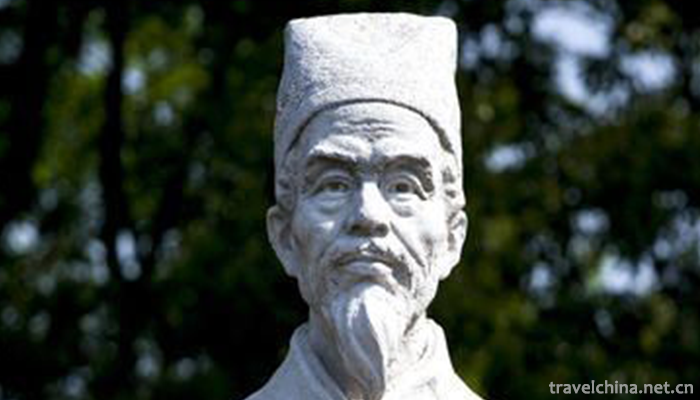
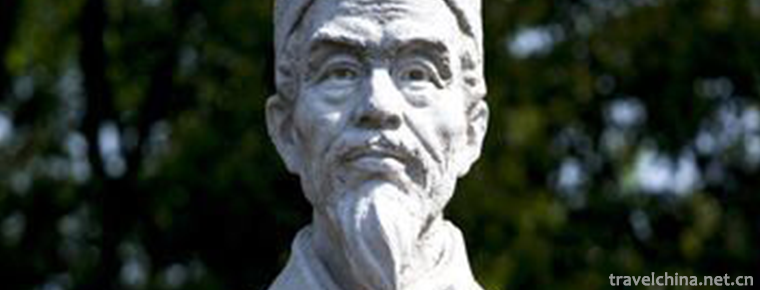
Legend of Li Shizhen
-
Tourist Area of Wu Taihu Lake in Suzhou
Wuzhong Taihu Lake Tourist Area in Suzhou is located in the southwest corner of the paradise of Taihu Lake, covering an area of 21.5 square kilometers.
Views: 233 Time 2018-12-06 -
Yunwushan Scenic Area
Yunwushan Scenic Spot is located in Paulownia Shop in the northwest of Huangpi District. It enjoys the reputation of "Xiling Resort Area, North Chu Famous Area, Beixi Border Barrier and Handizush
Views: 214 Time 2018-12-22 -
Liaoheyuan National Forest Park
Liaoheyuan National Forest Park is located in Dawopu Forest Farm, Pingquan County, Hebei Province. It is named for its birthplace of Liaohe River in China.
Views: 162 Time 2019-01-30 -
Mawei Shipping Museum
The Mawei Shipbuilding Cultural Heritage Group in Fuzhou is centered on the Chinese Shipbuilding Cultural Museum, including Zhongpo Battery, Zhaozhong Temple, British Consulate
Views: 241 Time 2019-02-06 -
Qianling Mountain Park
Qianling Mountain Park is a comprehensive tourist park, built in 1957, located in the northwest corner of Guiyang City. It is named Qianling Mountain because of its "first mountain in southern Gu
Views: 191 Time 2019-02-07 -
Shali River Scenic Area
Shali River Scenic Spot, located in Luohe City, Henan Province, is built on the basis of Shali River and Lihe River. The total area of the scenic spot is 86 square kilometers
Views: 183 Time 2019-02-07 -
Zhangye Danxia National Geological Park
Zhangye Danxia National Geological Park is the only Danxia landform and color hilly landscape complex area in China. Located at the northern foot of Qilian Mountains, 30 kilometers south of Linze Coun
Views: 214 Time 2019-03-16 -
Asil Lysi
"Asr" is the abbreviation of "Asru Winder" in Mongolian, and its translation is of great significance. Asr is a kind of Mongolian court music, which has a unique national style and
Views: 245 Time 2019-03-28 -
Making Techniques of Lanzhou Yellow River Waterwheel
Lanzhou Yellow River waterwheel production technology, Lanzhou City, Gansu Province, local traditional handicraft, one of the national intangible cultural heritage.
Views: 351 Time 2019-05-10 -
Miao Drum and Tibetan Festival
Guzang Festival, also known as the Drum Festival, is a ceremony for the Miao tribe to sacrifice the gods of their ancestors, commonly known as "eating drums and hiding". Guzang Festival exis
Views: 143 Time 2019-06-05 -
Nuo opera
Nuo Opera originated from Fang Xiangshi's exorcism activities in Shang and Zhou Dynasties. After Han Dynasty, it gradually developed into a ritual ceremony with strong entertaining color and opera mus
Views: 266 Time 2019-06-08 -
Shenhai well
Zigong Shenhai well is located at the foot of ruanjiaba mountain in Da'an District, covering an area of 3 mu, with an altitude of 341.4 meters. The well was excavated in the third year of Daoguang in Qing Dynasty (1823 A.D.) and completed in the 15th year of Daoguang (1835 A.D.), which lasted 13 years
Views: 177 Time 2020-10-15
